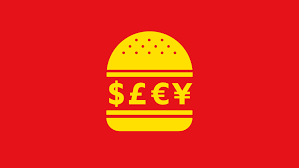
Is anyone not familiar with the Hunger Games? The film is set in a post-apocalyptic dystopian future in Panem, where a boy and a girl are chosen as “tributes” from each of the 12 districts each year and forced to compete in The Hunger Games, an elaborate TV battle.
Besides capturing dramatic violence and raw emotion, this critically acclaimed movie series also captures a few key ECONOMIC CONCEPTS!
The movies follow a love triangle between Katniss, Gale, and Peeta. Jennifer Lawrence reasoned by revealing that Peeta is Katniss’s comfort, so she doesn’t desire a warrior like Gale. Katniss had to forego Gale in order to choose Peeta, a perfect example of opportunity cost.Well, she couldn’t have the best of both worlds?
Besides, the post-apocalyptic-themed films also managed to rope in the ever-confusing concept of comparative advantage (at least for me!). Economists demonstrate that a person has a comparative advantage in producing something if he/she can do so at a lower cost than others. Among the 12 districts of Panem, each one specializes in a particular occupation (Yes, this brings in the concept of specialization too). According to the movie and book, the 2nd district does the stonework, the 4th district does the fishing, the 11th district does the agriculture, while the 12th district works on the coal mines, and of course, there’s the Capitol which is the definition of useless. This division of work is based on comparative advantage since the 12th District could have access to certain agricultural resources, but the lack of fertilized land (and acquiring it would entail incurring additional costs). The 11th district handles agriculture because it is able to do so with the most optimal allocation of its resources.
Panem’s mixed economic characteristics, on the other hand, are a rather bubble-wrapped
concept in these films. Unlike the lessons in an economic classroom, the mixture of capitalism and socialism isnt meant to adapt to their advantages. instead, Panem decided to adopt the disadvantages of the same and show us exactly what not to do! At Snow’s conclusion, the self-interest or profit motive of capitalism is crystal clear, but unlike him, we can’t use force or coercion for our profits, right?
Companies in the real-world market economy strive to create a better product and win over customers. Companies are frequently left behind as a result of the survival of the fittest. While capitalism is the real-life Hunger Games, the big winners are consumers. We get the best products at the lowest prices. Though one of the key characteristics of capitalism is consumer sovereignty, the Capitol on the contrary doesn’t give individuals the choice to choose where to live, where to work, or what to sell. This explains a planned economy which is a government monopoly that is run through exploitation, violence, and force, where free trade and investment are violently prohibited. In Panem, you would get flogged or executed. Talk about extreme measures!
The Capitol, in reiterating the adoption of disadvantages, focused on income inequality, an unfortunate stumbling block of capitalism. While the districts found themselves drowning in poverty, servitude, and starvation, the Capitol threw luxurious parties, enjoyed an endless supply of food and extravagant garments. This is a shameful image of the Capitol’s opulence. Unfortunately, this is also an accurate representation of the harsh reality of today’s world. While capitalism isn’t completely at fault, this freedom could help correct the political environment, market structure, and help level the playing field.
Just like Amazon Prime, I would love to declare this devastating picture of Panem as ‘unavailable’ in the modern world, but, oh well! At the very least, we learned about the (hidden) Hunger Games!
Bhumica Saran.





Leave a comment